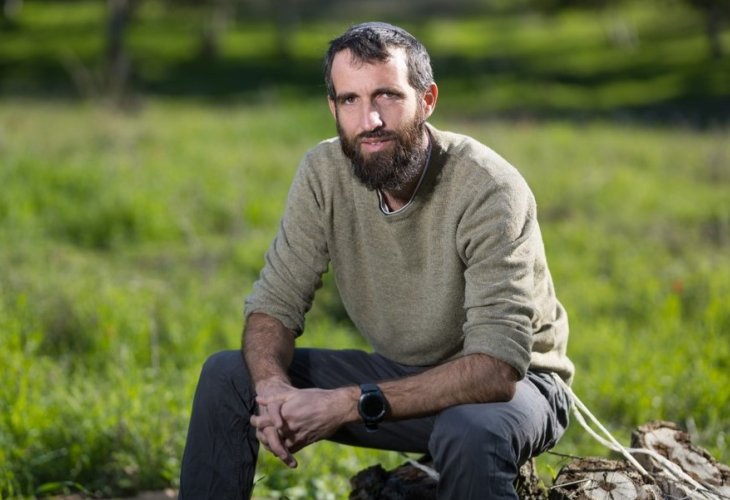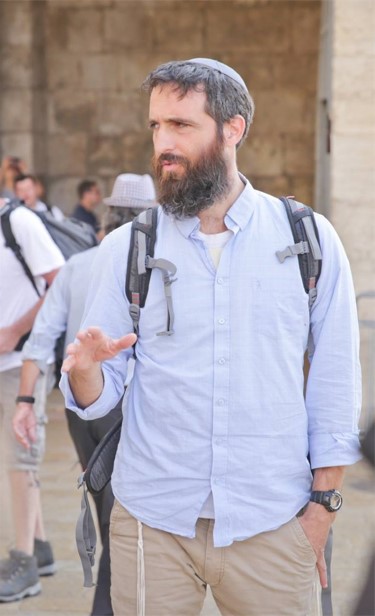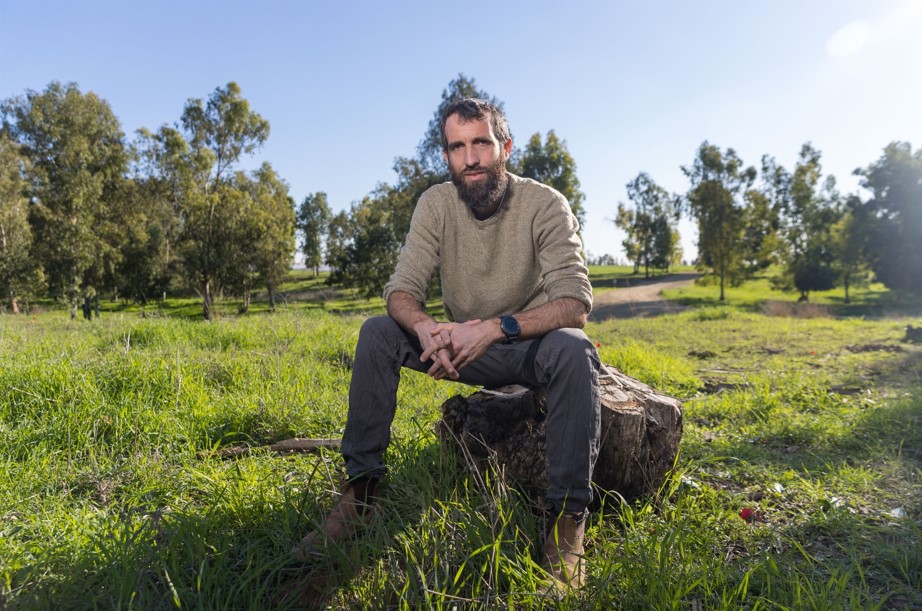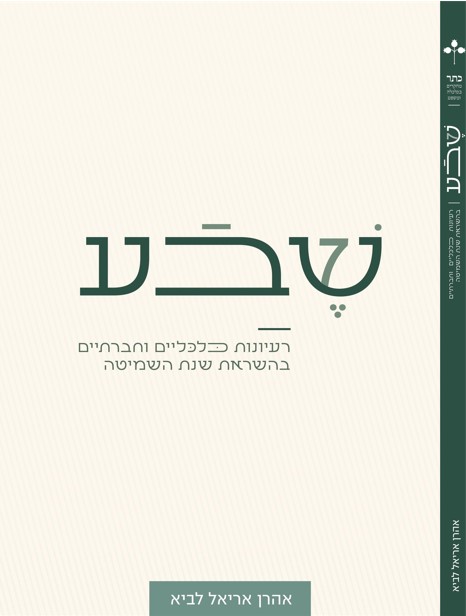"I Read Thousands of Philosophy Books, Then Told My Parents: 'I Want Gemara'"
Secular friends saw him as an outsider, the working and learning youth movement feared him, but Aharon Ariel continued to seek the truth until he fully returned to faith. Today, he manages Jewish communities worldwide and is confident: "Our Torah is deeper than any philosophy book, it contains everything."

He is 39 years old, married, a father of five, and resides in the village of Shuva. At first glance, Aharon Ariel's life seems entirely ordinary, but it turns out that's not entirely the case. He has been through many upheavals to reach where he is today. Every step he took in life was accompanied by thorough investigation, self-reflection, and a lot of thought.
"My return to faith didn't happen by chance," he explains, "it was a very long process. My current occupation as a community manager worldwide is based on the experiences and insights I have gained in life. Even today, I am engaged in learning and inquiry; it's something never-ending, and I don't think it will ever end."
The Journey to Judaism
As a child, Aharon Ariel grew up in Kiryat Tivon. "I was born to a secular Moroccan-descendant family with some traditions. For example, we had *kiddush* on Shabbat and matzah on Passover. I also celebrated a bar mitzvah, but not much beyond that."
Ariel always remembers himself as a child who loved to explore and examine. "Since I was 14, I was interested in lofty subjects like environmental, social, and economic issues. Because my father worked in high-tech, I had internet access at a very early age, which allowed me to freely find materials that interested me, and indeed I reached them. I didn't just rely on the computer but also regularly borrowed various books from the library and cultivated a large private library at home comprising several thousand books. Not thrillers or adventure books, but profound philosophy books. At that time, I didn't know how to define it, but I was on a quest, not even knowing what I was searching for."
And here comes a turning point. "On one of the days," Ariel recounts, "I was corresponding via email with an American friend who isn't Jewish, in English of course. Then he wrote me a surprising sentence: 'I envy you because you can read Hebrew.' I was very surprised and asked him what's so special about this language. He explained to me: 'I love reading Talmud books very much. Until now, I only read their translations and didn't have access to the original. I wish I could read the original in Hebrew.'"
"Today," Ariel notes with a smile, "I already know that Talmud books are indeed written in Hebrew letters, but not in modern Hebrew. Meaning, the fact that I know Hebrew doesn't mean I'm capable of understanding the Zohar book, for example. But following that correspondence, I started feeling a kind of missing out – someone overseas tells me he longs to know Hebrew to understand Talmud books, and I'm not peeking to see what's written in them?"
In the next phase, he found himself reading Rambam's books and tried learning Zohar and Gemara. "For my 17th birthday, I asked my mother for a Steinsaltz Gemara set and began teaching myself Gemara. I had no teacher; I learned everything alone. From the outset, I entered the world of the Talmud with one central question – what does Judaism have to say about subjects that interest me, like economics, health, maintaining the public environment, and so on? These were broad questions, and I was curious to discover what content awaited me regarding them."

After several years of study, he reached an interesting and unexpected conclusion: "I began to understand the difference between Jewish literature and other philosophy books. For instance, if we take Karl Heinrich Marx, one of the inventors of capitalism, and ask him or one of his successors what they have to say about the country's economy, they would undoubtedly give very intelligent answers. But if we ask them what they have to say on marital crises or what their opinion is on the medical world, they wouldn't have a word on it. Because they are only knowledgeable in one area. The same thing would happen with researchers in various psychological methods. They would surely have much to say about us as a community and as human beings, but they wouldn't understand inflation lectures at all.
In Judaism, however, the situation is different. Although it is a Torah given thousands of years ago, it includes sets of halachic concepts relevant to various life fields. The amazing thing is that if you only understand the rationale behind these halachic concepts, you can also apply them to other areas of your personal life. Because the Torah is a foundation for everything."
And what happened to you when you started realizing this?
"Initially, there was a phase of denial. Today, I know this is very common among those who return to faith. It was hard for me to accept that what I understand is true, and even harder to accept the obligatory implications—what, should I start keeping Shabbat and eating kosher? It seemed unrealistic. Later, I reached the second stage – I already felt uncomfortable desecrating Shabbat, but I told myself 'if I'm going to the sea in a car driven by my friend and I'm just sitting by him – it's okay,' and so on in other areas."
Ariel emphasizes that he speaks about the days of 20 years ago when the Jewish world was not as developed as today, and it wasn't possible to find a supportive community in every corner of the country. "My feeling was that the moment I change my way of life, I am left without friends. This is not what I wanted."
Community Manager
At this stage, Ariel found himself waiting in place. After years of progress, he didn't know where his path was headed, but then things naturally developed. "Very quickly, I discovered that my secular friends began to view me as an outsider," he explains, "they felt I was different and could no longer see me as part of them. In those days, I was part of the working and learning youth movement and didn't want to leave, but there too, they felt I didn't quite belong. Despite this, I continued to attend activities until, at some point, after distributing a booklet I wrote with 80 pages on the Jewish foundations of the labor movement – they claimed it was a secular movement and couldn't have 'inciting materials' distributed within it. Very quickly, I realized the time had come for our paths to part. I left the movement and connected more with the religious world. I also did this independently, researching online who the leading figures and rabbis were and directly approaching them."
It sounds like the process was done very intellectually for you. Was there no emotion involved?
"Of course, there was emotion too. There were trips with friends to mikvahs and solitary retreats in forests, and there was also reading *mussar* books, including books by Rabbi Nachman and Chabad Rebbes, which really shaped my personality. But it was the deep understanding that motivated my practical changes."
Later in his journey, he moved to Jerusalem, got married, and moved with his wife to the village of Shuva, where he connected with a large community of returnees to faith. "Today, in my profession, I manage a network of Jewish communities spread across 30 countries worldwide," Ariel says. "The idea is to provide smaller communities with the necessary support and allow community members to manage themselves. I work in collaboration with the Ministry of Diaspora Affairs and an American organization called 'Vision.' The work is fascinating and connects me with special people full of a spirit of mission."
By the way, Ariel notes that five of the communities under his management reside in Ukraine, and some of their members continue to live there these days. "We constantly keep in touch with them, organizing evacuations, food and medicine deliveries, and also try to assist them from a humanitarian perspective," he shares.

The Shmita as a Parable
Besides his daily work, Ariel also engages in publishing books on various topics. This year, he decided to publish a very unique book on the topic of shmita, which surprisingly doesn't deal with its halachic perspective.
"As I mentioned, one of the things I became aware of at the beginning of my journey back to faith is the understanding that the Torah and Judaism have fundamental ideas from which you can learn regarding all aspects of life. One of the most profound and important ideas is the topic of shmita. In this mitzvah and all the related aspects, there is a lot of depth, and you can learn from them for other areas of life as well."
What do you mean?
"In my book, I mainly explain the foundations behind the concept of shmita and demonstrate how they can be used today to create a better society. For example, there is the concept of 'sabbatical year' known to us all from academia and education. Today, we understand that for a person to continue working and giving of themselves, they need a break for rest and refreshment every seven years. This is entirely based on the shmita concept.
"Even at a deeper level, we can see that there were years in distant history when shmita was considered a very difficult year for farmers. According to records of shmita observance before the destruction of the Second Temple up until the Bar Kochba revolt – it can be seen that people starved during the shmita years; they sometimes sank into deep poverty due to strict adherence to the mitzvah. According to my understanding, the Torah seeks to teach us an important principle: shmita is essentially a kind of planned crisis in a person's life. From this, we can learn that crises can indeed be times of advancement and creating new things. The more we anticipate crises, the fewer unexpected crises we will have in life."

The words are very theoretical. Can you give a tangible example?
"Let's look around us at people aged 30-40. How many of them are currently working in the same job they had five or ten years ago? Only a few. On the other hand, if we look at our parents and the previous generation, almost all of them retired from the same job they started in as young people. The reason is that today we understand that areas of occupation are changing over the years; some become irrelevant, and some are reinvented. This means that each of us is likely to face a kind of crisis, where we will probably need to change something in our work patterns. This is exactly the kind of crisis shmita addresses. If we only take advantage of times when we change jobs or alter our work to propel ourselves forward, we can turn the crisis into an opportunity. It's not just that the word 'crisis' is used in the Bible in reference to a woman in labor. Because while she may be at the most difficult moments of her life, from these very moments, the happiest event will occur, and she will bring a new soul into the world."
Ariel emphasizes that shmita also comes to teach us about planning ahead. He shares a fascinating example on this topic: "I once heard something interesting from a friend who is a former air force member. He claims there are researchers who have examined fatal airplane accidents and found that the time gaps between them are quite similar, and on average, there is one every 3-4 years. When they tried to understand why, they concluded that most likely, after a fatal accident, there is a period where pilots are very alert and adhere to everything required, but as time passes, they start loosening from the trauma and begin to treat the rules more loosely until another accident occurs.
"Once they understood this in the air force, they decided to create a similar impact, just without causing an accident. So, every once in a while, they make sure to conduct a training room for an entire week, performing various safety audits, and they constantly pump the risks into the pilots' awareness. It doesn't eliminate accidents 100%, but it succeeds in moderating them and extending the time intervals between them. I think this is a very important foundation to learn from shmita and one that each of us should adopt for ourselves along the way."

